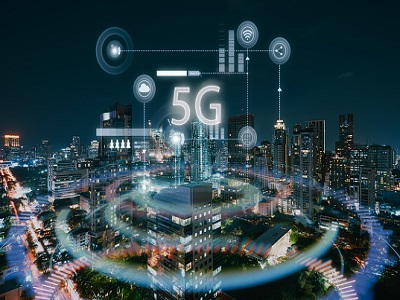

Understanding the development and importance of self-driving automobiles is essential before exploring the role of 5G in the future of autonomous vehicles. Autonomous vehicles, often known as self-driving automobiles or driverless cars, are autos that can drive themselves and operate without a driver. For them to understand their environment, make judgments, and navigate safely, a mix of sensors, cameras, lidar, radar, artificial intelligence, and connection is essential.
Real-time communication between autonomous vehicles and the infrastructure around them requires 5G's ultra-fast data transmission and minimal latency. This feature guarantees prompt responsiveness to altering road conditions.
A component of the Internet of Things (IoT), vehicle-to-everything (V2X) communication permits communication between vehicles, as well as with traffic signals, road signs, and even pedestrians. As V2X communication spreads and becomes more dependable with 5G, the chance of accidents and traffic jams decreases.
For safe and effective self-driving operations, 5G connections with high speed and low latency enable vehicles to access and share precise mapping and navigation data with high accuracy. In an emergency or for remote maintenance and software updates, 5G enables remote monitoring and control of autonomous vehicles. Vehicles are kept in top shape because of this.
5G enables effective fleet management for commercial applications, enabling companies to monitor and improve the operation of autonomous delivery trucks and ride-sharing fleets.
Although 5G technology has the potential to substantially progress autonomous vehicles, there are also risks and issues to be aware of. Among the top worries are privacy, network security, and reliability. In addition, it's critical to ensure the equitable deployment of 5G infrastructure and autonomous car technology to prevent escalating social inequalities.
In conclusion, a crucial step toward a safer and more effective transportation future is the integration of 5G technology into the world of autonomous vehicles. The symbiotic relationship between 5G and self-driving cars is set to transform how we move and offers enormous promise for lowering accidents, traffic jams, and environmental effects. To ensure that everyone can benefit from autonomous vehicles and 5G technology, it is crucial to solve issues with cybersecurity and fair access. It is obvious that the voyage promises to be revolutionary and significant on a global scale as we go down this fascinating path to the future.
Visit our website https://www.nextgwireless.net.
#5G #5GData #5Gmobiledata #Internet #5GNetwork #5GConnection #5GConnectivity #5GMobile #5GMobileInternet #NextelleWireless











